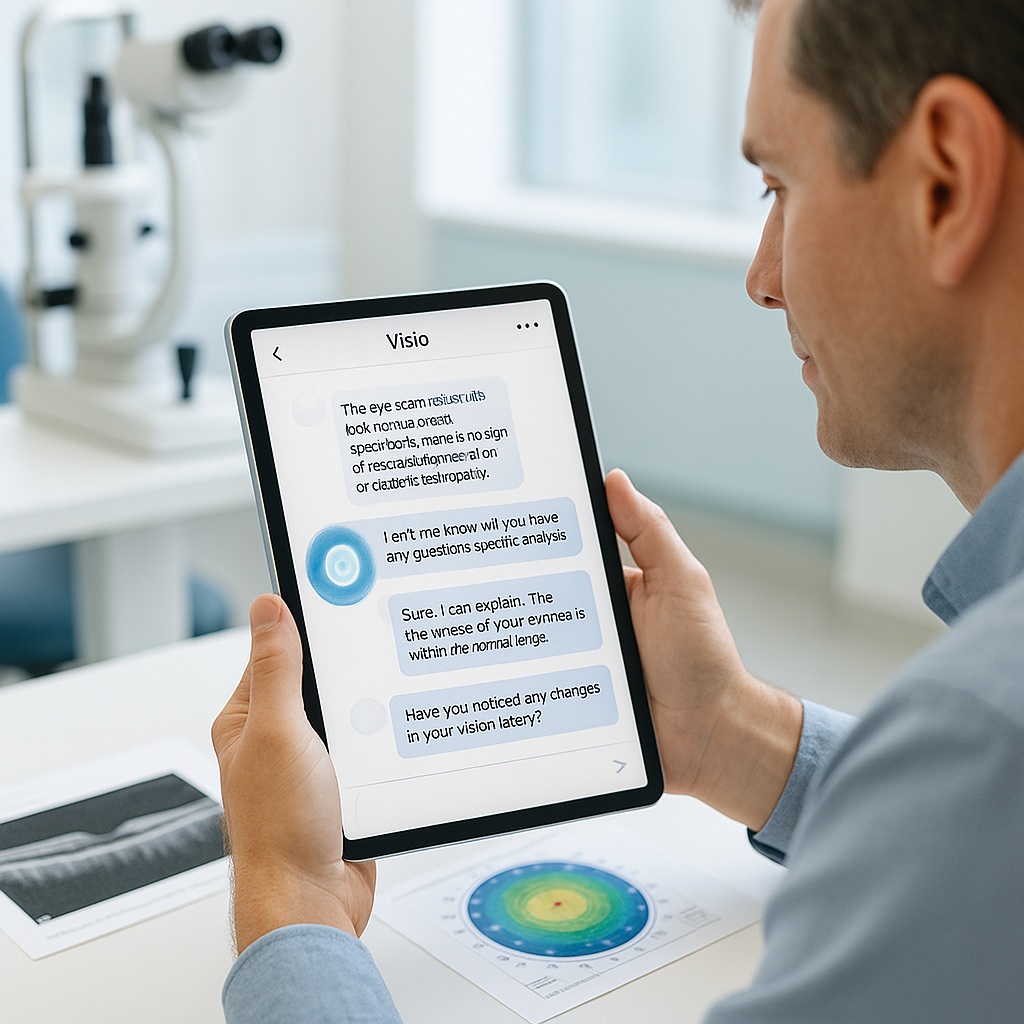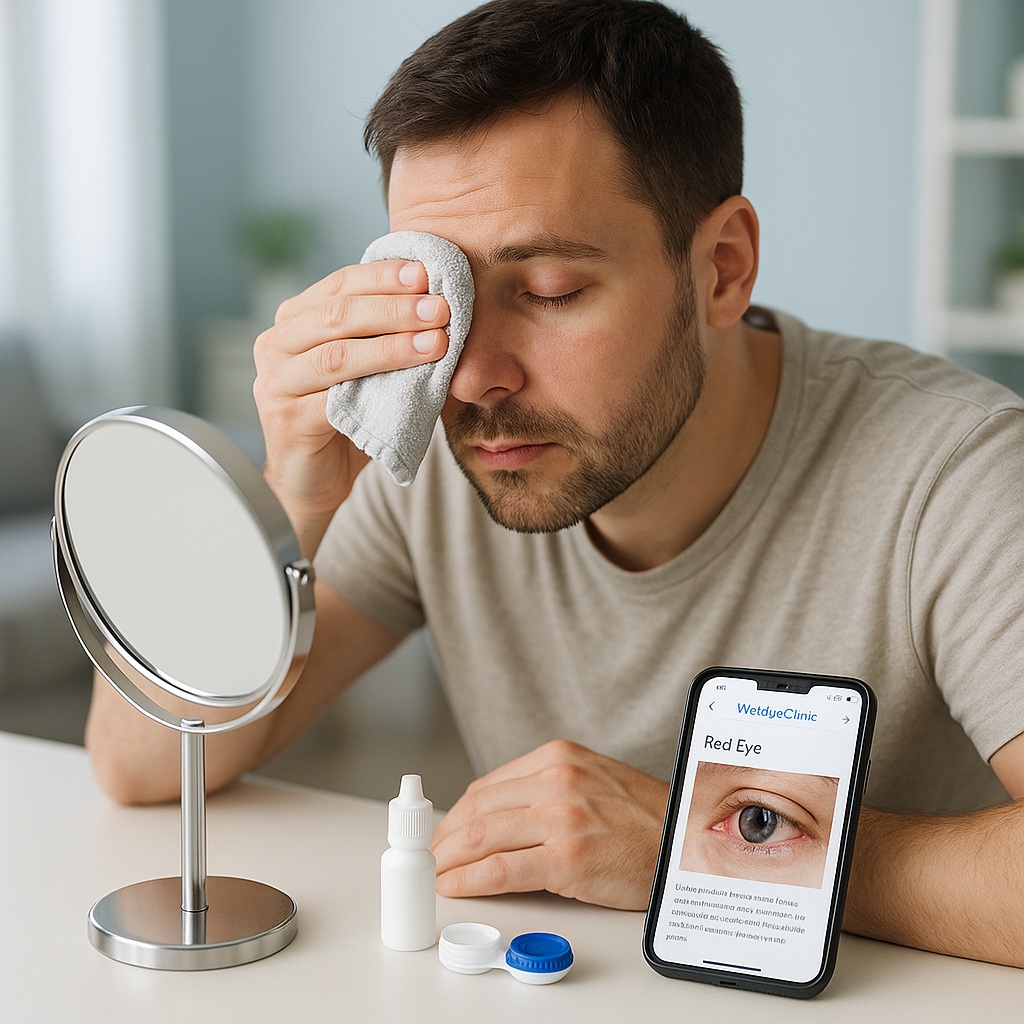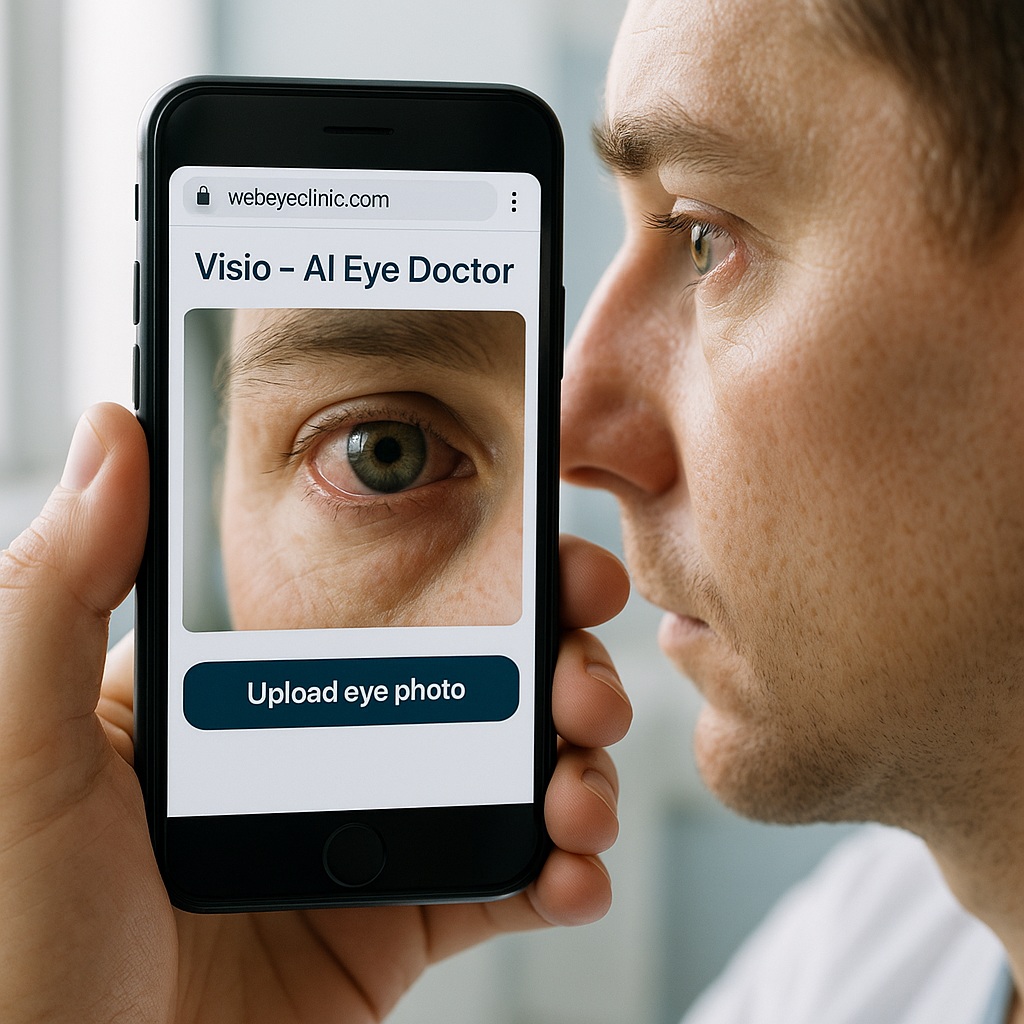Published: July 6, 2025
This guide is written for patients who want fast, reliable answers about their eye health and was medically reviewed by an ophthalmologist.
When something changes in your vision, you shouldn’t have to wait weeks to understand what it might mean. Many people go online and try to ask the eye doctor online, but most of what they find is confusing, not personal, or not trustworthy. That’s why WebEyeClinic created Ask the Eye Doctor — a way to get clear, specialist-informed guidance about your eyes, in normal language, in your language, with support even if you don’t fully understand what your eye report says.
Why Understanding Your Eye Health Matters
Eye appointments move fast. You may leave with new terms like “pressure is a little high,” “there are changes in the macula,” or “your cornea is thinning,” but not a full explanation. Some people also face language barriers, anxiety, or just feel rushed. That means they go home worried and still not sure how serious the problem is.
WebEyeClinic helps you slow that moment down. We explain what your doctor may have seen, what those words usually mean, and which symptoms need urgent attention from an in-person specialist. Our goal is not to replace your ophthalmologist. Our goal is to help you walk into that visit prepared, confident, and informed.
Meet Visio: Your AI-Powered Eye Health Assistant
Visio is our AI assistant built specifically for eye health education. Instead of generic internet search results, Visio guides you through what you’re actually experiencing. You describe symptoms, share what the clinic told you, or even upload a scan image — and Visio walks you through what that content means in plain language.
Here’s what Visio can do for you:
- Explore Your Symptoms: Tell Visio what you’re feeling — blurry spot in the center, flashes, dryness, burning, halos, headaches, “lines look wavy,” etc. Visio then asks smart follow-up questions, similar to how an eye doctor would triage you.
- Image Explanation Support: You can upload common eye imaging like OCT (retina scan), Pentacam (corneal map), or fundus photos (back-of-eye pictures). Visio can give you a plain-language explanation of what the picture appears to show. This is educational, not a diagnosis.
- Multilingual Help: You can chat in your own language. Visio can translate your words and also translate the doctor-style wording back to you in simple terms. This helps patients who don’t speak English as a first language feel in control.
Visio is not a random chatbot. It is focused on eye health and designed to help you understand, not scare you. You still get told when something sounds urgent and needs real-life care.
What About Real Doctors?
For higher-risk or more complex findings, a licensed eye specialist may review your concern. We do not prescribe medication through WebEyeClinic. We do not diagnose or replace an in-person exam. Instead, we help you understand what might be going on so you can ask the right questions when you see your own eye doctor.
Our approach is simple: we turn medical jargon into a plan. You get practical questions like “Should I ask about glaucoma drops?” or “Should I ask if this is early macular degeneration?” or “Should I stop wearing my contact lenses until I’m rechecked?” That means you walk into your appointment calm, informed, and ready to advocate for yourself.
What You Get
For $20, you get two weeks of unlimited chat with Visio plus doctor-informed guidance. This includes:
- Symptom walkthrough: Help describing what you’re feeling in medical terms your doctor will understand.
- Scan/image explanation: Plain-language summaries of common tests like OCT, Pentacam maps, or retinal photos.
- Multilingual translation: You can talk in your own language and still get usable questions to take to your doctor.
- Visit prep summary: A downloadable summary of your main concerns, in clear wording, that you can show at your next clinic visit.
In other words: you’re not just Googling symptoms. You’re preparing for a real medical conversation.
Why People Ask the Eye Doctor Online Instead of Waiting
People come to us in a few common moments:
- “My vision changed today and I’m scared.” You suddenly see blur, a gray spot, floaters, flashes, or light sensitivity and you don’t know if it’s urgent.
- “The clinic gave me results but I didn’t understand them.” You got an OCT, Pentacam, or pressure reading and you’re thinking, “Is this bad?”
- “English isn’t my first language.” You’re worried the doctor is not understanding you — or you’re not understanding the doctor.
- “I just need someone to explain without rushing me.” You want calm, judgment-free, repeatable explanations you can read again later.
We’re here for all of that. But we’re also honest about danger signs. Education is good. Delaying urgent care is not.
When These Tips Are Not Enough
Online guidance can help you understand your situation. It cannot treat an emergency. Call an eye doctor — or seek urgent in-person care the same day — if you notice any of these symptoms:
- A new dark or gray spot in the center of your vision.
- Sudden flashes of light, a shower of new floaters, or a “curtain” coming across your sight. (Possible retinal tear or detachment.)
- A painful, red eye with light sensitivity and reduced vision. (Possible severe infection, inflammation, or acute glaucoma.)
- Straight lines that suddenly look wavy or bent. (Possible macular problem.)
Do not “wait and see” with those symptoms. AI is not a replacement for urgent, in-person retina or cornea care.
How to Get Started
It’s simple to begin with WebEyeClinic:
- Visit WebEyeClinic.com
- Sign up or log in to your account
- Purchase the $20, 2-week plan
- Click “Start Chat” to open your session with Visio
- Describe your symptoms or upload your eye scan
- Get a summary of what you should ask your eye doctor next
Bottom Line: Smarter Questions, Better Visits
WebEyeClinic is not a replacement for your in-person ophthalmologist. We do not diagnose, prescribe, or tell you to ignore urgent symptoms. What we do is help you understand what might be happening, translate medical language for you, and prepare you to ask the right questions at your next appointment.
If you’ve ever left an eye exam feeling confused — or scared — this is for you. You deserve clarity, in your language, at your speed.
Medically reviewed by: SR, MD, Ophthalmologist (Retina Specialist).
Last updated: October 25, 2025.


